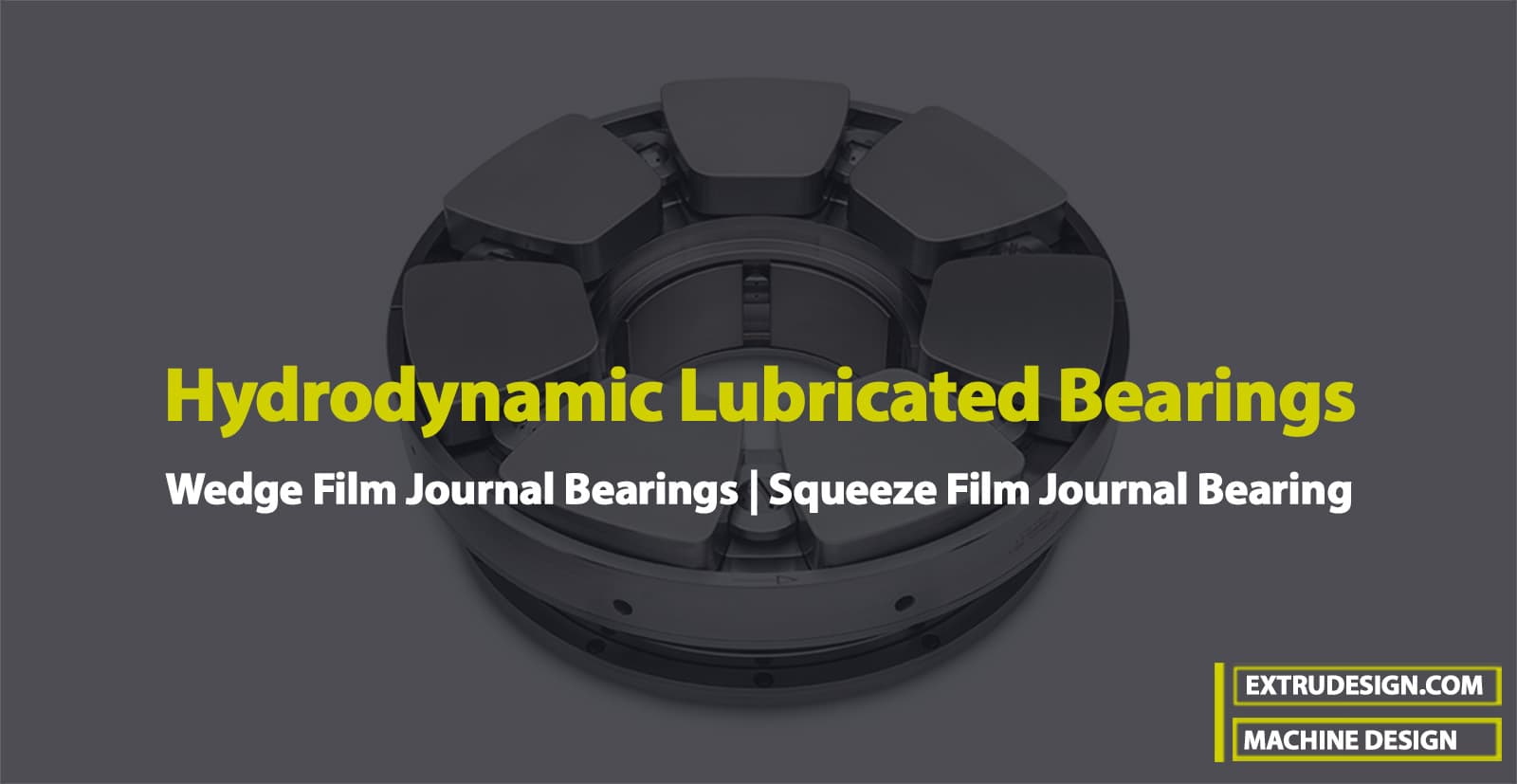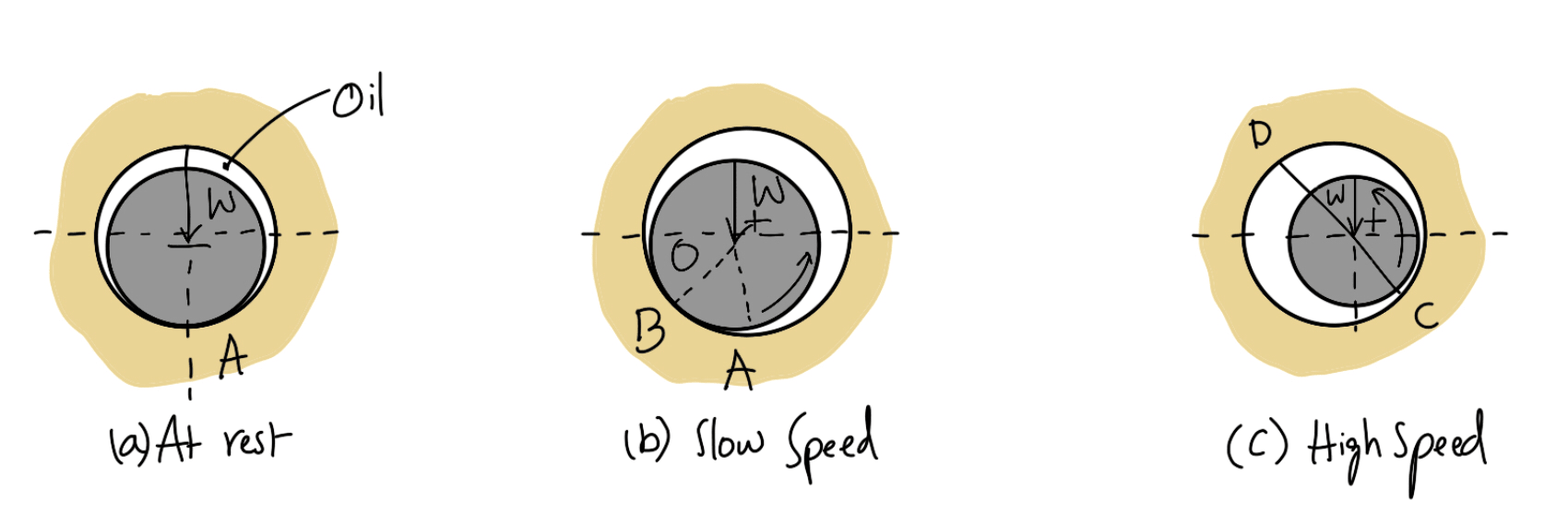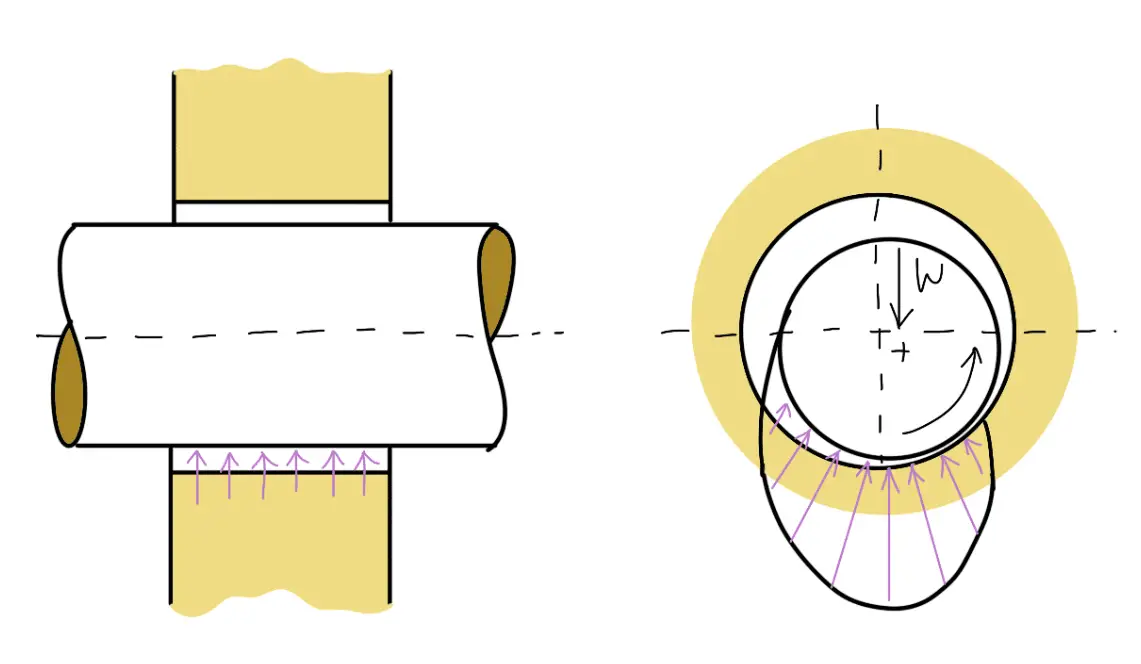In the previous article, we discussed the different types of Bearings. Sliding Contact Bearings are one of the types of bearings depending upon the nature of contact. Wedge Film Journal Bearings are Hydrodynamic Lubricated Bearings that come under Sliding Contact Bearings. Let us discuss more details on Wedge Film Journal Bearings.

A bearing is a machine element that supports another moving machine element known as a journal. It enables a relative motion between the contact surfaces of the members while carrying the load. While doing so a certain amount of power is wasted in overcoming frictional resistance due to the relative motion between the contact surfaces.
A little consideration will show that a certain amount of power is wasted in overcoming frictional resistance due to the relative motion between the contact surfaces. There will be rapid wear if the rubbing surfaces are in direct contact. To reduce frictional resistance and wear and sometimes to carry away the heat generated, a layer of fluid known as lubricant may be provided. The lubricant used to separate the journal and bearing is usually a mineral oil refined from petroleum, but vegetable oils, silicon oils, greases, etc., may be used.
Wedge Film Journal Bearings
The Bearings that works based on the flow of a viscous fluid in a converging channel are known as the Wedge Film Journal Bearings. The load-carrying ability of a wedge Film journal bearing results when the journal and/or the bearing rotates relative to the load. The most common case is that of a steady load, a fixed (non-rotating) bearing, and a rotating journal.
Figure (a) shows a journal at rest with metal-to-metal contact at A on the line of action of the supported load. When the journal rotates slowly in the anticlockwise direction, as shown in Figure (b), the point of contact will move to B so that the angle AOB is the angle of sliding friction of the surfaces in contact at B. In the absence of a lubricant, there will be dry metal-to-metal friction.
If a lubricant is present in the clearance space of the bearing and journal, then a thin absorbed film of the lubricant may partly separate the surface, but a continuous fluid film completely separating the surfaces will not exist because of slow speed.

When the speed of the journal is increased, a continuous fluid film is established as in the above figure (c). The center of the journal has moved so that the minimum film thickness is at C. It may be noted that from D to C in the direction of motion, the film is continually narrowing and hence is a converging film. The curved converging film may be considered as a wedge-shaped film of a slipper bearing wrapped around the journal.
A little consideration will show that from C to D in the direction of rotation, as shown in the above figure (c) , the film is diverging and cannot give rise to a positive pressure or a supporting action.
The following figure shows the two views of the bearing shown in above figure (c), with the variation of pressure in the converging film. Actually, because of side leakage, the angle of contact on which pressure acts is less than 180°.

Squeeze Film Journal Bearing
We have seen in the previous article that in a wedge film journal bearing, the bearing carries a steady load and the journal rotates relative to the bearing. But in certain cases, the bearings oscillate or rotate so slowly that the wedge film cannot provide a satisfactory film thickness.
If the load is uniform or varying in magnitude while acting in a constant direction, this becomes a thin film or possibly a zero film problem. But if the load reverses its direction, the squeeze film may develop sufficient capacity to carry the dynamic loads without contact between the journal and the bearing. Such bearings are known as squeeze film journal bearings.

Leave a Reply